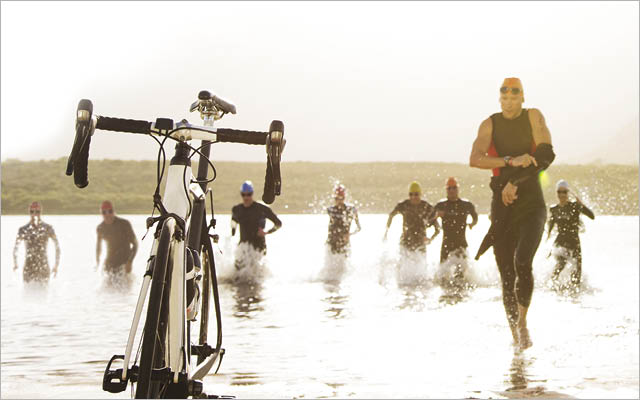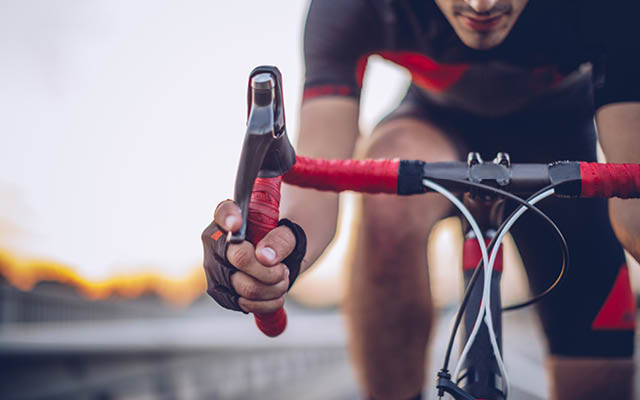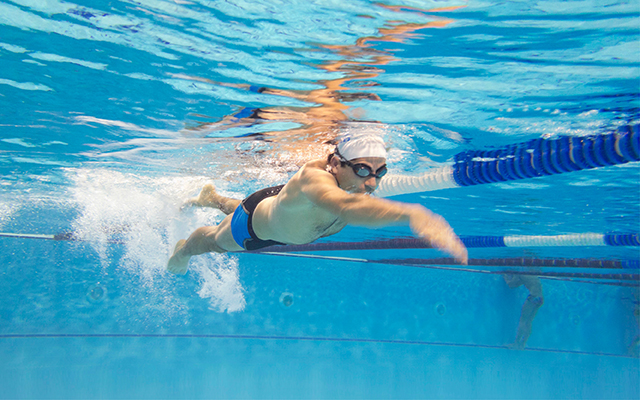Imagine biking with a swim cap and goggles on, or running in cycling cleats while carrying a bike. Ridiculous, right? Yet that’s what triathlons would be like without the critical transitions. For an athlete to excel, the goal is to streamline those chaotic changing zones into orderly, time-saving areas.
“I call it ‘free speed,’” says Troy Jacobson, senior national director of endurance sports training for Life Time. “If you’re good at the transitions, you have the ability to make up time on some of your competitors who might be faster at swimming or cycling or running. The free-speed element is a really big part of being competitive in triathlons.”
Even if you’re more concerned with having a good time than shaving minutes off your PR, mastering transitions is important. Your heart rate is typically at its highest when you’re completing one discipline, especially when emerging from the swim, explains Matt Dixon, MSc, triathlon coach and author of multiple books on endurance training.
“You’re already in a stressful environment,” he says. “But you can control transitions. If you make it automatic and routine, you can focus on having more fun.”
The biggest mistake that many recreational triathletes make is failing to practice transitions in advance. That can lead to tragi-comical situations (wriggling out of a wetsuit, for example, or forgetting shoes) that sap energy for the rest of the race.
“Many people panic and go as fast as they can,” says Dixon. “All that does is deflate the ability to race to their potential.”
Building core strength helps handle the switch from a prone position (swimming) to seated (biking) and upright (running), Jacobson notes. And brick workouts that include more than one discipline — for instance, the bike and run performed back to back — can help you breeze through the transitions and cash in on free speed.
Improving your transitions comes down to practice, practice, practice. Jacobson and Dixon share their training tips.
Technique Tips
Drill 1: Dress Rehearsal
“The practice piece has to happen at the beginning of the season, before you start racing,” says Jacobson. “Otherwise, you’ll be really rusty.”
- Once a week, find time when you can add 10 to 15 minutes to your workout.
- At a lake or the ocean (or a swimming pool where this setup is permitted), create a mock transition zone with all the important elements. Hang cycling garments on the bike and make sure the Velcro tabs on your shoes are open. Set up another station for running.
- Practice coming out of the water, removing your cap and goggles as quickly and calmly as you can, rinsing any dirt or sand from your feet, fastening shoes, grabbing sunglasses, clipping on your helmet, and affixing a race number.
- Repeat the routine for running by dismounting from the bike, switching shoes, trading a helmet for a visor, and ensuring you have water and fuel for the road.
- Experiment with fueling and hydration: Some racers prefer to fuel at the transitions; others save time by eating and drinking while biking and running.
- Write a checklist of everything you need for race day, as well as reminders of how you’ll handle each transition.
Drill 2: Build Core Strength
A strong core is essential for handling triathlon-transition demands. It will help power you through the areas crowded with racers and prevent injuries. Performing challenging single-side bird dogs will deliver a stable trunk:
- On your hands and knees, lift your right arm and leg off the floor.
- Bring your right elbow to your right knee.
- Extend the arm and leg, pause, and bring them together again.
- After 10 reps on the right side, repeat on the left side.
Drill 3: Brick Workouts
This staple of triathlon training can be tough on the body, but it’s essential for transition prep. Brick workouts combine two disciplines in one exercise block: swim and bike, or bike and run. This type of routine helps you prepare body and mind for the transitions by rehearsing the steps of switching from one event to another — and acclimating to your elevated heart rate.
- Once a week, ride for 60 minutes, then run for 10 to 15 minutes.
- After four weeks, swim for 400 meters, then ride at race pace for 15 minutes.
- Alternate bricks until race day. Over time, you’ll build comfort and confidence.
Drill 4: Keep Calm and Move On
Dixon suggests using “lion’s” breath — exhaling forcefully — to find calm between events, as it relieves tension and stress. Once a day, try the following routine to practice:
- Sitting in a comfortable position, place your hands on your knees, straighten your arms, and extend your fingers.
- Inhale through your nose, and then exhale forcefully through your mouth, making a “ha” sound, opening your mouth wide, and sticking out your tongue toward your chin.
- Repeat four times.
On race day, you can use a more subtle form of lion’s breath to ease through the transitions.
This originally appeared as “Tri, Tri, Tri Again” in the April 2019 print issue of Experience Life.




This Post Has 0 Comments